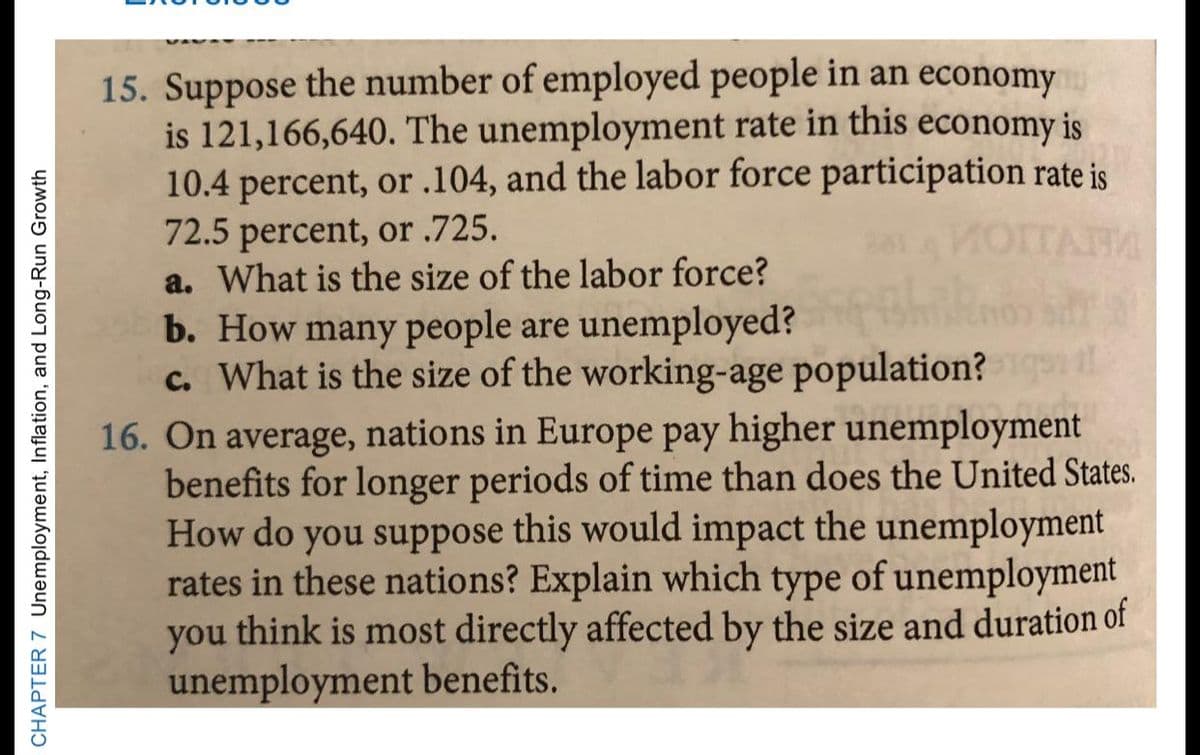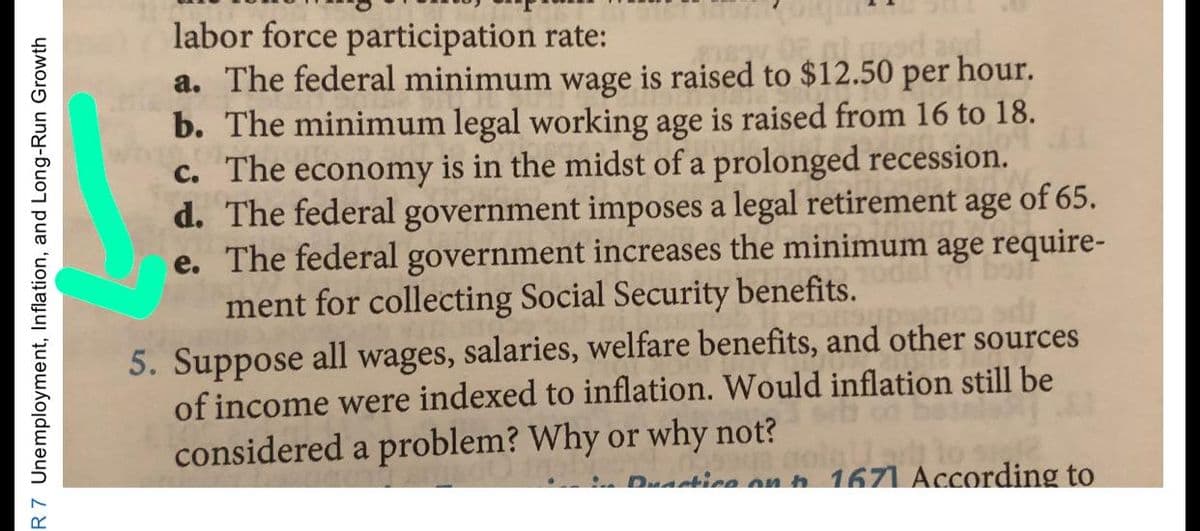5. Suppose all wages, salaries, welfare benefits, and other sources of income were indexed to inflation. Would inflation still be considered a problem? Why or why not? 7 A ccording to
5. Suppose all wages, salaries, welfare benefits, and other sources of income were indexed to inflation. Would inflation still be considered a problem? Why or why not? 7 A ccording to
Principles of Economics 2e
2nd Edition
ISBN:9781947172364
Author:Steven A. Greenlaw; David Shapiro
Publisher:Steven A. Greenlaw; David Shapiro
Chapter15: Poverty And Economic Inequality
Section: Chapter Questions
Problem 47P: A group of 10 people have the following annual incomes:...
Related questions
Question

Transcribed Image Text:15. Suppose the number of employed people in an economy
is 121,166,640. The unemployment rate in this economy is
10.4 percent, or .104, and the labor force participation rate is
72.5 percent, or .725.
a. What is the size of the labor force?
MOTTARA
b. How many people are unemployed?
c. What is the size of the working-age population?
16. On average, nations in Europe pay higher unemployment
benefits for longer periods of time than does the United States.
How do you suppose this would impact the unemployment
rates in these nations? Explain which type of unemployment
you think is most directly affected by the size and duration of
unemployment benefits.
CHAPTER 7 Unemployment, Inflation, and Long-Run Growth

Transcribed Image Text:labor force participation rate:
a. The federal minimum wage is raised to $12.50 per hour.
b. The minimum legal working age is raised from 16 to 18.
c. The economy is in the midst of a prolonged recession.
d. The federal government imposes a legal retirement age
e. The federal government increases the minimum age require-
ment for collecting Social Security benefits.
of 65.
5. Suppose all wages, salaries, welfare benefits, and other sources
of income were indexed to inflation. Would inflation still be
considered a problem? Why or why not?
Duatice on h 1671 According to
7 Unemployment, Inflation, and Long-Run Growth
Expert Solution
This question has been solved!
Explore an expertly crafted, step-by-step solution for a thorough understanding of key concepts.
This is a popular solution!
Trending now
This is a popular solution!
Step by step
Solved in 3 steps with 4 images

Knowledge Booster
Learn more about
Need a deep-dive on the concept behind this application? Look no further. Learn more about this topic, economics and related others by exploring similar questions and additional content below.Recommended textbooks for you

Principles of Economics 2e
Economics
ISBN:
9781947172364
Author:
Steven A. Greenlaw; David Shapiro
Publisher:
OpenStax



Principles of Economics 2e
Economics
ISBN:
9781947172364
Author:
Steven A. Greenlaw; David Shapiro
Publisher:
OpenStax



Economics (MindTap Course List)
Economics
ISBN:
9781337617383
Author:
Roger A. Arnold
Publisher:
Cengage Learning